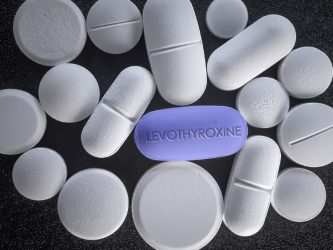
In investigating formulations of the hypothyroidism drug levothyroxine, researchers have developed a new non-targeted approach using ultra-high-performance liquid chromatography with a data-independent acquisition high-resolution mass spectrometry (UHPLC-DIA-HRMS).
The authors explained that the analytical technique is not commonly utilised in pharmaceutical quality control analysis.
Levothyroxine is a low-dose API where formulations consist predominantly of excipients. It is sensitive to external factors such as light, oxygen, humidity, the paper explained.
“[A] small change in its concentration can significantly affect therapeutic activity. In addition to its potential instability, it is also problematic in terms of bioequivalence when switched to a different formulation”.
Key findings from the study include identification of new reaction products between excipients in drug formulations; previously undeclared phospholipids were also observed in some samples.
The authors shared that to the best of their knowledge, no study has been published that addresses impurities “of real marketed products aged under common storage conditions”.
Main observations from the levothyroxine formulations study
The authors concluded that presence of unexpected compounds in drug formulations proved that “the current control mechanisms do not have to cover the full complexity of pharmaceutical formulations necessarily”.
These compounds “would not be detected by the standard analytical method [liquid chromatography-ultraviolet detection (LC-UV)] due to the lack of chromophores”, the paper highlighted.
The paper declared that “excipients used in new formulations of established drugs met pharmacopeial requirements”. However, the overall context of the drug must be considered. This is important, according to the authors, “for low-dose narrow therapeutical index drugs where excipients significantly exceed the API, as in the case of levothyroxine”.
Conclusion
UHPLC-DIA-HRMS…helped to reveal the reaction processes taking place in the [levothyroxine] tablets and also the presence of unexpected compounds”
Chmelařová et al. summarised that the UHPLC-DIA-HRMS approach reported in the paper “helped to reveal the reaction processes taking place in the tablets and also the presence of unexpected compounds.”
The findings could be useful during bioequivalence assessment of different formulations of levothyroxine, the authors remarked, “improving the control mechanisms in general, and thus improving the safety of future products”.
This research is from a journal pre-proof paper in the Journal of Pharmaceutical Analysis.
The post Using mass spectrometry to improve quality and safety of levothyroxine appeared first on European Pharmaceutical Review.